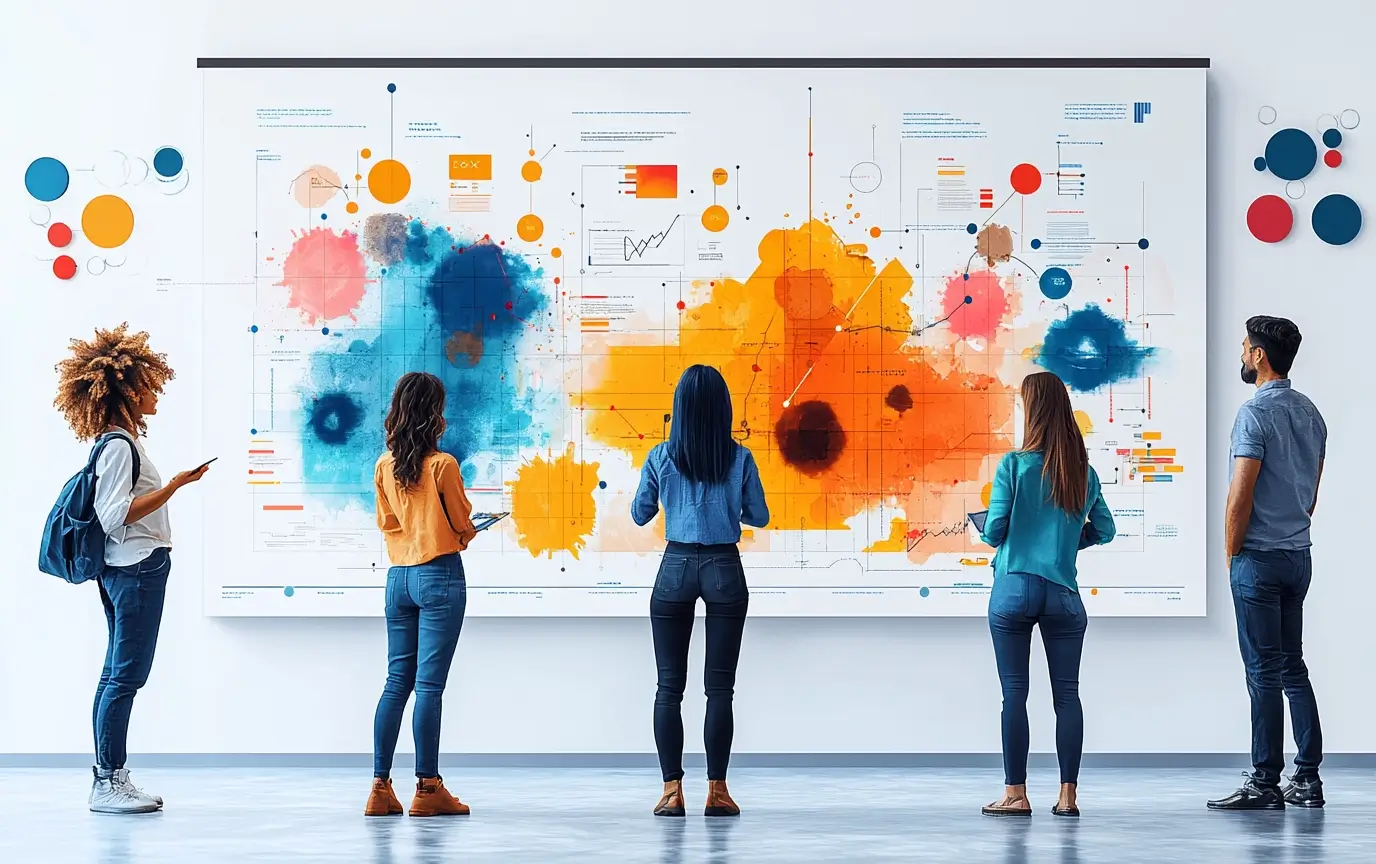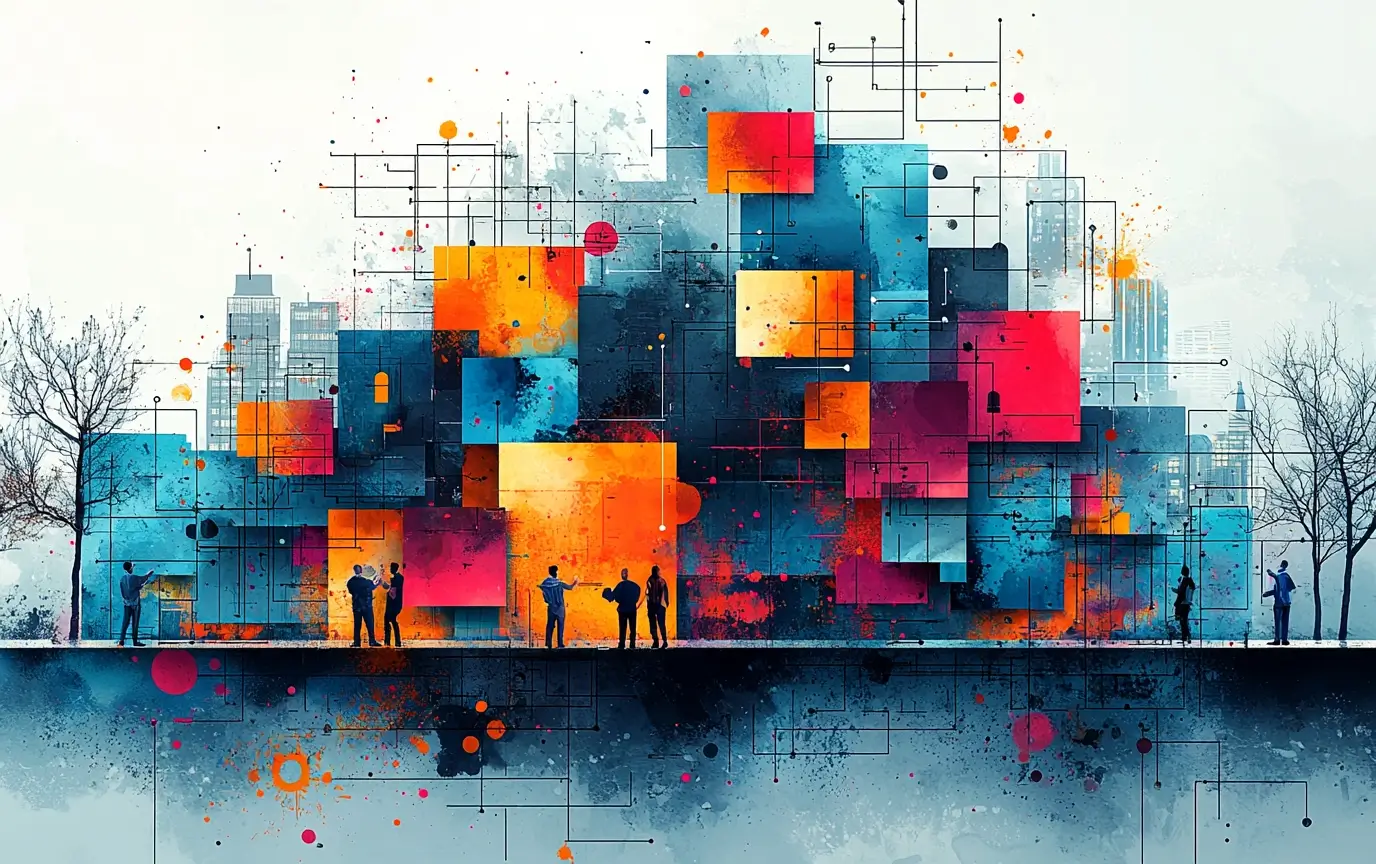Case Studies: Successful Customer Experience (CX) with AI Implementation
%20with%20AI%20Implementation.webp)
1. Introduction
Artificial Intelligence (AI) has become a game-changer in enhancing Customer Experience (CX) across various industries. Companies that successfully implement AI into their CX strategies have seen significant improvements in customer satisfaction, operational efficiency, and overall business growth. This article highlights case studies of leading brands that have leveraged AI to transform their CX, providing insights into the strategies they used and the results they achieved.
2. Case Study 1: Spotify - Personalization Through AI
Strategy: Spotify utilizes AI-driven algorithms to personalize music recommendations for its users. The platform's "Discover Weekly" playlist is an example of how AI analyzes user behavior, listening habits, and preferences to curate a tailored music experience.
Result: The implementation of AI-powered personalization has significantly enhanced user engagement on Spotify. The "Discover Weekly" feature alone generates over 2.3 billion streams per month, contributing to increased customer satisfaction and retention.
3. Case Study 2: Starbucks - AI-Powered Predictive Ordering
Strategy: Starbucks introduced AI-driven predictive analytics through its mobile app to provide personalized order suggestions. The AI system analyzes customer purchase history, weather patterns, and even time of day to recommend the most relevant products.
Result: This AI integration led to higher average order values and increased customer satisfaction. Starbucks saw a 20% increase in customer engagement through the app, driving significant growth in its mobile ordering and payment platform.
4. Case Study 3: Netflix - Enhancing Viewer Experience with AI
Strategy: Netflix uses AI and machine learning algorithms to analyze user viewing habits and preferences to provide personalized content recommendations. The platform also uses AI to optimize streaming quality and reduce buffering times.
Result: Netflix’s AI-driven approach has resulted in higher user retention and increased viewing time. The personalized recommendation engine accounts for 80% of the content watched on Netflix, leading to a significant reduction in churn rates.
5. Case Study 4: BMW - AI for Predictive Maintenance and Enhanced Customer Service
Strategy: BMW implemented AI in its vehicles for predictive maintenance and to provide real-time alerts to customers about potential issues before they become serious. This proactive approach enhances the driving experience and ensures vehicle safety.
Result: BMW’s use of AI has led to improved customer satisfaction and loyalty. The predictive maintenance system reduced vehicle downtime by 30%, leading to higher customer satisfaction and trust in the brand.
6. Case Study 5: Amazon - AI in Customer Support and Fulfillment
Strategy: Amazon leverages AI through its customer support system with AI-powered chatbots and automated responses that handle a vast number of customer inquiries. Additionally, AI is used in fulfillment centers to optimize inventory management and predict product demand.
Result: Amazon’s AI-driven customer support and fulfillment strategies have significantly improved efficiency and customer satisfaction. The AI chatbots resolved over 75% of customer inquiries without human intervention, leading to faster response times and reduced operational costs.
7. Case Study 6: Sephora - AI in Beauty Consultation and Personalization
Strategy: Sephora introduced AI-driven tools like the Virtual Artist, which uses augmented reality (AR) to allow customers to try on makeup products virtually. AI also powers personalized beauty recommendations based on individual preferences and skin type.
Result: Sephora’s integration of AI has enhanced the shopping experience, leading to increased customer engagement and satisfaction. The Virtual Artist tool contributed to a 20% increase in online sales and a 32% increase in customer loyalty.
8. Case Study 7: Ford - AI for Personalized Customer Experiences in Automotive Retail
Strategy: Ford implemented AI in its dealerships to personalize the customer shopping experience. The AI system provides personalized vehicle recommendations based on customer preferences, purchase history, and current market trends.
Result: This AI-driven approach has led to higher customer satisfaction and sales conversion rates. Ford reported a 15% increase in customer engagement and a 10% increase in sales as a result of personalized recommendations.
9. Case Study 8: McDonald's - AI in Drive-Thru and Order Customization
Strategy: McDonald's deployed AI at its drive-thrus to customize menu displays based on the time of day, weather, and trending menu items. AI also personalizes order suggestions based on previous customer orders.
Result: McDonald's saw an improvement in order accuracy and customer satisfaction. The AI implementation led to a 6% increase in average order size and faster service times, enhancing the overall customer experience.
10. Case Study 9: H&M - AI in Inventory Management and Customer Preferences
Strategy: H&M uses AI to optimize inventory management by predicting demand for different products across its stores. AI also analyzes customer feedback and preferences to inform product design and inventory decisions.
Result: H&M’s AI-driven inventory management has reduced excess stock and improved product availability. The result was a 14% increase in sales and improved customer satisfaction due to better product availability.
11. Case Study 10: Hilton Hotels - AI for Personalized Guest Experiences
Strategy: Hilton Hotels implemented AI-powered chatbots to assist guests with booking, check-in, and personalized recommendations for activities during their stay. The AI system also gathers guest preferences to enhance future stays.
Result: Hilton’s use of AI has improved guest satisfaction and operational efficiency. The AI-driven guest service system resulted in a 20% increase in positive guest feedback and a 10% reduction in check-in times.
12. Case Study 12: Nike - AI for Personalized Shopping Experiences
Strategy: Nike implemented AI in its e-commerce platform to provide personalized shopping experiences. The AI system analyzes customer behavior and preferences to offer tailored product recommendations and personalized content.
Result: Nike’s AI-driven approach has led to increased customer engagement and higher conversion rates. The personalized shopping experience resulted in a 30% increase in online sales and a significant boost in customer loyalty.
13. Case Study 13: L’Oréal - AI in Virtual Beauty Consultations
Strategy: L’Oréal introduced AI-powered virtual beauty consultations that allow customers to receive personalized skincare and makeup advice online. The AI system analyzes the customer’s skin type, concerns, and preferences to recommend products.
Result: L’Oréal’s AI-driven virtual consultations have enhanced the customer experience, leading to higher customer satisfaction and increased sales. The initiative contributed to a 20% increase in online sales and a 25% improvement in customer retention.
14. Case Study 14: Toyota - AI in Predictive Maintenance
Strategy: Toyota integrated AI into its vehicles to provide predictive maintenance alerts. The AI system monitors the vehicle’s condition and predicts potential issues before they occur, notifying the driver and recommending maintenance services.
Result: Toyota’s AI implementation has improved customer satisfaction and vehicle reliability. The predictive maintenance system reduced unexpected breakdowns by 40% and increased customer satisfaction scores by 15%.
15. Case Study 15: Delta Airlines - AI for Predictive Customer Service
Strategy: Delta Airlines uses AI to analyze customer data and predict potential service issues before they escalate. The AI system identifies passengers who may need assistance based on their travel history, behavior, and preferences.
Result: Delta’s AI-driven customer service approach has improved passenger satisfaction and loyalty. The predictive service model led to a 12% increase in customer satisfaction and a 10% reduction in service-related complaints.
16. Case Study 16: AT&T - AI in Customer Support Automation
Strategy: AT&T implemented AI-powered chatbots to handle customer inquiries and support requests. The AI system can resolve common issues and direct more complex problems to human agents when necessary.
Result: AT&T’s AI-driven support system has significantly improved response times and customer satisfaction. The AI chatbots resolved 80% of inquiries without human intervention, leading to a 25% reduction in operational costs and a 15% increase in customer satisfaction.
17. Case Study 17: Walmart - AI in Supply Chain Optimization
Strategy: Walmart integrated AI into its supply chain management to optimize inventory levels and predict demand. The AI system analyzes sales data, market trends, and other factors to ensure that products are always available when customers need them.
Result: Walmart’s AI-driven supply chain management has improved inventory accuracy and reduced stockouts. The system led to a 30% reduction in excess inventory and a 20% increase in customer satisfaction due to better product availability.
18. Case Study 18: UnitedHealth Group - AI in Predictive Healthcare Services
Strategy: UnitedHealth Group uses AI to analyze patient data and predict health issues before they become critical. The AI system identifies at-risk patients and recommends preventative measures, improving patient outcomes.
Result: UnitedHealth’s AI implementation has enhanced patient care and satisfaction. The predictive healthcare model reduced hospital readmission rates by 25% and improved patient satisfaction scores by 20%.
19. Case Study 19: Adobe - AI for Personalized Marketing Campaigns
Strategy: Adobe implemented AI in its marketing platform to deliver personalized content and campaigns based on user behavior and preferences. The AI system analyzes customer interactions to create targeted marketing messages that resonate with individual users.
Result: Adobe’s AI-driven marketing approach has increased engagement and conversion rates. The personalized campaigns led to a 15% increase in customer engagement and a 10% improvement in conversion rates.
20. Case Study 20: Tesla - AI in Autonomous Driving and Customer Experience
Strategy: Tesla uses AI to power its autonomous driving features, enhancing the driving experience with real-time decision-making and predictive capabilities. The AI system also provides over-the-air updates that improve vehicle performance and user experience.
Result: Tesla’s AI-driven technology has set new standards for customer experience in the automotive industry. The autonomous driving features contributed to a 30% increase in customer satisfaction and helped Tesla maintain its position as a leader in innovation.
Conclusion
These case studies illustrate how leading brands have successfully integrated AI into their Customer Experience (CX) strategies to achieve remarkable results. From personalized shopping experiences to predictive maintenance and healthcare services, AI has proven to be a powerful tool in enhancing customer satisfaction, increasing loyalty, and driving business growth.
As AI continues to evolve, its potential to transform CX across industries will only grow, offering businesses new opportunities to innovate and stay ahead of the competition. For companies looking to leverage AI in their digital transformation journey, it is essential to have a clear strategy that aligns with overall CX goals. Explore more about how AI and Digital Transformation can enhance your Customer Experience (CX).
Check Renascence's Signature Services

Behavioral Economics
Discover the power of Behavioral Economics in driving customer behavior.

Mystery Shopping
Uncover hidden insights with our mystery shopping & touchpoint audit services.

Experience Design
Crafting seamless journeys, blending creativity & practicality for exceptional experiences.
Experience Loom
Discover the latest insights from industry leaders in our management consulting and customer experience podcasts.
The Naked Customer. Episode 3. Customer Loyalty, Brand Loyalty & CX
In this episode of The Naked Customer Podcast, host Aslan Patov is joined by JD Ackley, CEO of RAIZOR AI, to explore the evolving role of AI in customer experience (CX) and its impact on automation, job security, and creativity.
In this episode of The Naked Customer Podcast, host Aslan Patov is joined by Mark Hamill, CEO & Co-founder of ARCET Global, to explore the evolution of Customer Experience (CX) and its growing role in business transformation.
In this episode of The Naked Customer Podcast, host Aslan Patov is joined by Mark Hamill, CEO & Co-founder of ARCET Global, to explore the evolution of Customer Experience (CX) and its growing role in business transformation.
In this episode of The Naked Customer Podcast, host Aslan Patov is joined by JD Ackley, CEO of RAIZOR AI, to explore the evolving role of AI in customer experience (CX) and its impact on automation, job security, and creativity.
Experience Journal's Latest
Stay up to date with our informative blog posts.
%20in%20Healthcare.%20A%20Cure%20for%20Patient%20Pain%20Points.webp)
Customer Experience (CX) in Healthcare: A Cure for Patient Pain Points
%20Trends%20in%202026.%20What%20to%20Expect.webp)
Digital Transformation (DT) Trends in 2026: What to Expect

Behavioral Economics for Business: How Companies Use It Every Day
%20How-To.%20Practical%20Tips%20That%20Work.webp)
Employee Experience (EX) How-To: Practical Tips That Work
.webp)
The Critical Factors Influencing Employee Experience (EX)
%20Jobs.%20How%20To%20Succeed%20in%202025.webp)
Remote Employee Experience (EX) Jobs: How To Succeed in 2025
%20for%20SMEs%20in%20the%20Middle%20East.%20What%20Works%20and%20What%20Fails.webp)
Customer Experience (CX) for SMEs in the Middle East: What Works and What Fails

Why CX Starts With EX in 2026: Culture, Connection, Performance
%20Wheel.%20Mapping%20Outcomes.webp)
The Employee Experience (EX) Wheel: Mapping Outcomes

Behavioral Economics Can Best Be Described As "Psychology Meets Economics"

Behavioral Economics Is More Than Just Numbers

Behavioral Economics Explains Why People Are Irrational: And What to Do About It

Is Behavioral Economics Micro or Macro? Understanding Its Scope
%3F%20Strategies%20for%20Modern%20Organizations.webp)
How McKinsey Approaches Employee Experience (EX)? Strategies for Modern Organizations

Behavioral Economics Is Dead: Debates on Its Future
%20Leader%20Do%3F.webp)
What Does an Employee Experience (EX) Leader Do?
%20Leader%20Do%3F.webp)
What Does an Employee Experience (EX) Leader Do?
%20Is%20Important%20in%202026.webp)




